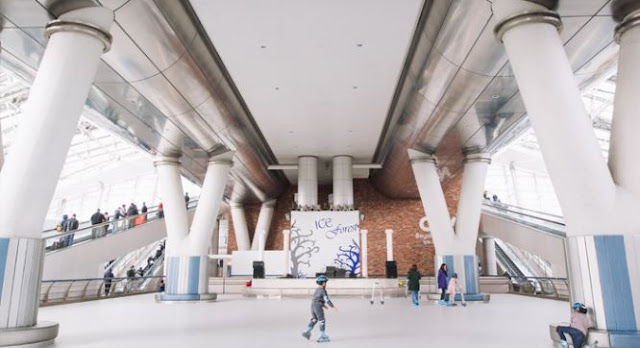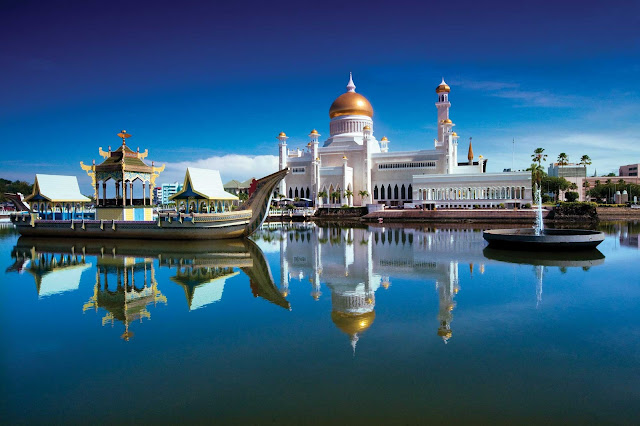The Land of the Morning Calm – South Korea
The Land of the Morning Calm – South Korea
Korean Temples
1. Haeinsa Temple (Hapcheon)
Haeinsa Temple was founded
during the third year of King Ae-Jang's reign (802), by two monks Suneung and
Ijung. The name "Haein" originates from the expression Haeinsammae of
Hwaeomgyeong (Buddhist scripture), which means truly enlightened world of
Buddha and our naturally undefiled mind.
Along with the
Tripitaka Koreana (National Treasure No.32) and Janggyeongpanjeon (National
Treasure No. 52), 15 more public treasures and some 200 private treasures are
enshrined at Haeinsa Temple, which has been appointed as a universal cultural
heritage since December, 1995 for its many cultural properties and historical
remains. Iljumun, Daejeokgwangjeon and the Tripitaka Koreana are recognized as
famous treasures. Iljumun Gate was the first gate that every sattva must pass
to become a Buddha and considered as a representative work of ancient
architecture.
Daejeokgwangjeon, the grand sanctuary, and the three-story stone pagoda in the yard possess the majestic appearance of the one thousand-year-old temple. Since the 23rd year of Goryeo Dynasty (year 1236), it took 16 years to finish the Tripitaka Koreana, the most famous national treasure of Haeinsa Temple, which was made as a wish to overcome the national crisis caused by Mongolia Invasion. The printing blocks are 68cm wide, 24.5cm long, 3 cm thick with wood fixed at each end to maintain balance and lacquer was applied to prevent corrosion. Silver magnolias growing near the South Sea and Geojae area were cut down, soaked in sea water for several years and then dried to make these printing blocks. The blocks are a result of the king and his people's effort to repulse the Mongolian army with support from Buddha. The 81,340 blocks include 6,791 volumes.
Daejeokgwangjeon, the grand sanctuary, and the three-story stone pagoda in the yard possess the majestic appearance of the one thousand-year-old temple. Since the 23rd year of Goryeo Dynasty (year 1236), it took 16 years to finish the Tripitaka Koreana, the most famous national treasure of Haeinsa Temple, which was made as a wish to overcome the national crisis caused by Mongolia Invasion. The printing blocks are 68cm wide, 24.5cm long, 3 cm thick with wood fixed at each end to maintain balance and lacquer was applied to prevent corrosion. Silver magnolias growing near the South Sea and Geojae area were cut down, soaked in sea water for several years and then dried to make these printing blocks. The blocks are a result of the king and his people's effort to repulse the Mongolian army with support from Buddha. The 81,340 blocks include 6,791 volumes.
2. Wawoojongsa Temple (Yongin)
Wawoojongsa Temple was
established in 1970 by Kim Hae-Geun, a monk who was displaced by the Korean
War. The temple is not only a reflection of the monk’s sincere hope for the
reunification of the North and South, but is also the birthplace of the Korean
Buddhist Nirvana Order.
There are over 3,000 Buddhist statues on the temple grounds, the most famous of which are the Buldu (Buddha heads) placed at the entrance and the Wabul (reclining Buddha statue) stationed in the middle of the mountain. The 8m-high Buldu is the largest of its kind and the Wabul, which is made from a juniper tree from Indonesia, is 3m in height and 12m in length. As the world’s biggest wooden Buddhist sculpture, the Buldu has been registered in the Guinness Book of Records.
There are over 3,000 Buddhist statues on the temple grounds, the most famous of which are the Buldu (Buddha heads) placed at the entrance and the Wabul (reclining Buddha statue) stationed in the middle of the mountain. The 8m-high Buldu is the largest of its kind and the Wabul, which is made from a juniper tree from Indonesia, is 3m in height and 12m in length. As the world’s biggest wooden Buddhist sculpture, the Buldu has been registered in the Guinness Book of Records.
The temple is also home to a 5-Dhyani Buddha made of 30 tons of brass (taking decades to complete) as well as the 12-ton Bell of Unification (struck during the Seoul Olympics in 1988). Other attractions include a bronze statue of Buddha sitting with his legs half-crossed (the largest of its kind in the nation) and the nation’s only Sakyamuni Bulgohangsang statue.
One of the other unique things about the temple is the Pagoda of Unification, located besides the stairs of the Hall of Nirvana. The pagoda is comprised of stones brought by visitors from various holy sites all over the world. Hence, the construction of the Pagoda is a never-ending progress. As a symbol of the pervading hope for world peace, a wide range of Buddhist statues from many countries including India, Myanmar, Sri Lanka, China and Thailand are on display around the temple, allowing visitors to learn about Buddhist cultures from all over the world.
3. Unjusa Temple (Hwasun)
Unjusa Temple is unlike other
temples in that it has unusual Buddha statues and pagodas – it is often
referred to as a mysterious temple. The founder of Unjusa Temple is not known
but it is speculated that it was built during the Silla Period (BC 57~935).
Unjusa does not
have a Geumgangmun or Cheonwangmun, which are very often seen in Buddhist
temples. The first thing you see when you enter Unjusa is the 9-story stone
pagoda (National Treasure no. 796). The tower, again, does not have intricate
designs, and is very simple. As you walk past the 9-story pagoda, you come to a
forked road. Turning left, you will see Chilseong Rock. Because it resembles
the 7 stars of the Big Dipper, some people argue that the rock is imitating the
constellation. Follow the same road further and you will see two Buddha
statues, called Wabul, where Buddha is resting on its side, lying down. These
statues are, among the ones in Unjusa Temple, the most intricate in design and
execution. Go up a bit further, and you will see the Siwibul Statue standing.
Pass Siwibul Statue through the thick groves, and you will come to a series of
7-storey and 5-storey stone pagodas. What makes the stone pagodas of Unjusa
Temple interesting to examine is that they each boats several unique designs and
features.
















Comments
Post a Comment